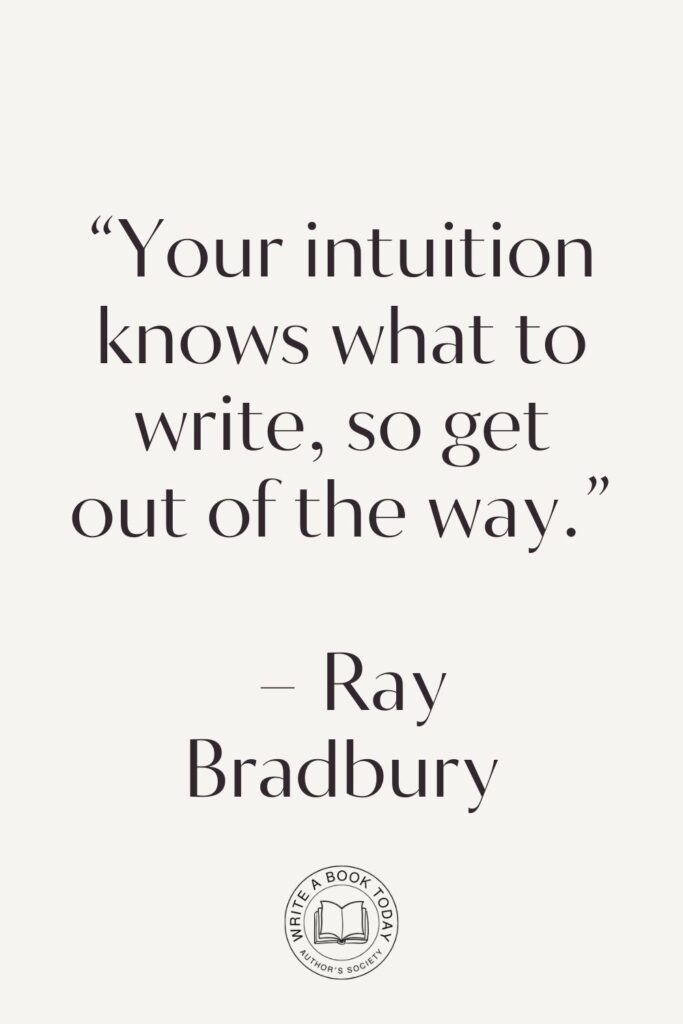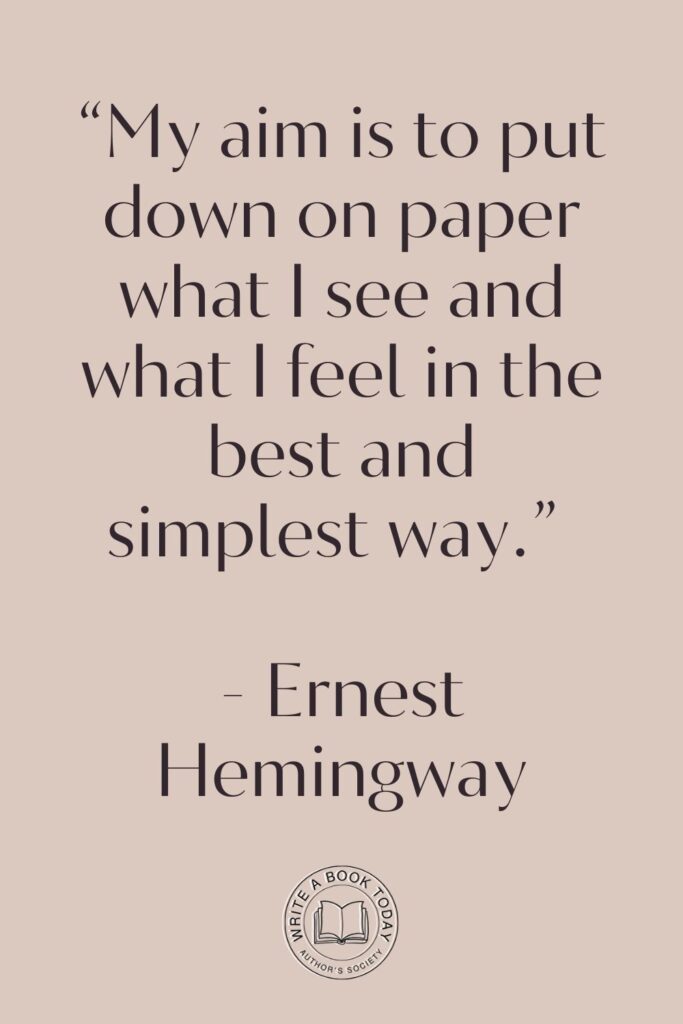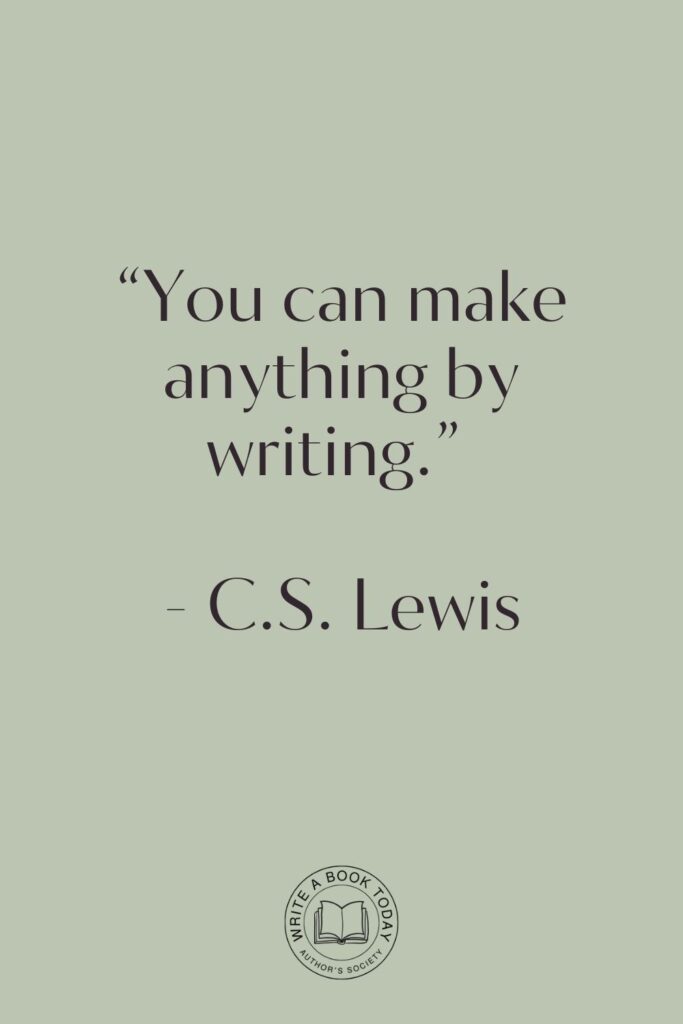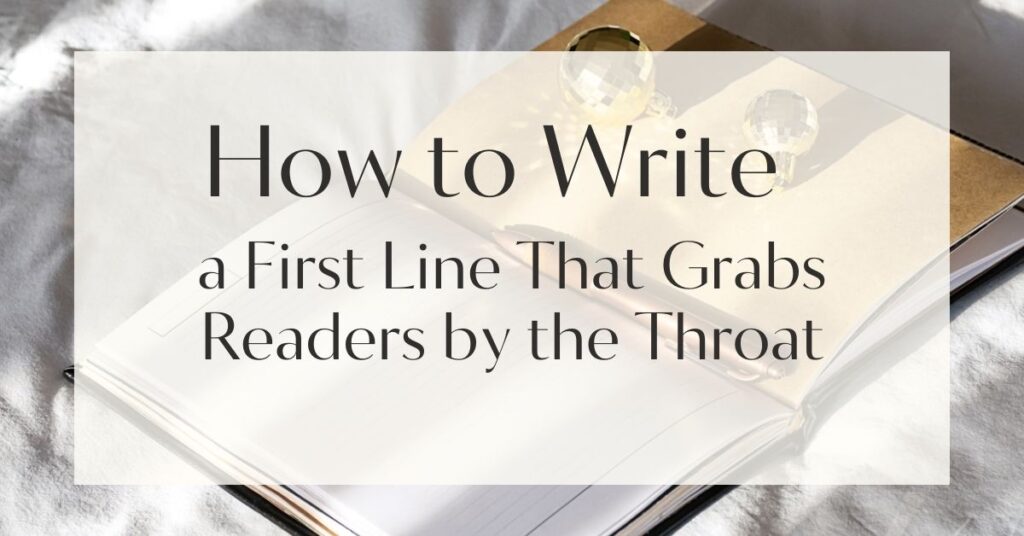Imagine you’re standing at the edge of a literary ocean, the waves of words crashing at your feet. You know that diving in means embarking on a journey, and the first line is your compass, guiding you into the depths of the story. Have you ever wondered why some first lines cling to your memory like a catchy tune, while others drift away unnoticed?
This blog post is your treasure map to discovering how to write a captivating first line that grabs readers by the throat and doesn’t let go. From understanding the art of crafting memorable first lines to exploring techniques that hook your readers, we’re diving deep into the essence of storytelling.
The Art of the First Line
The magic of a well-crafted first line lies in its ability to transport readers instantly into the world of your story. It’s the door that swings open, inviting them to step inside. But why do these opening words hold such power?
The first line sets the tone, creates intrigue, and establishes a connection between the reader and the narrative. It whispers promises of adventure, mystery, or emotion, compelling readers to turn the page.
Why First Lines Matter
A first line is more than just an introduction; it’s a promise. It’s the author’s commitment to deliver a tale worth the reader’s time. A compelling first line captivates, igniting curiosity and drawing readers into the world you’ve crafted. Think of it as the spark that lights the fire of imagination.
Whether it’s the opening of a novel or an article, the first line can determine whether readers continue or move on to something else.
Consider the iconic “It was the best of times, it was the worst of times” from Charles Dickens’ “A Tale of Two Cities.” This line captures the essence of the story’s themes and sets the stage for the unfolding drama. In a similar way, your first line should encapsulate the spirit of your work, offering a tantalizing glimpse of what’s to come.

Elements of a Captivating First Line
Crafting a first line that lingers in the reader’s mind requires a delicate balance of elements. A captivating first line often includes a touch of mystery, a dash of emotion, or a sprinkle of vivid imagery. It might introduce a character, pose a question, or present an unexpected scenario.
These elements work together to create a sense of anticipation, making readers eager to discover more. To craft a compelling first line, consider starting with a bold statement or intriguing question.
This approach can instantly engage readers and spark their curiosity. Think about what makes your story unique and how you can convey that in just a few words. Experiment with different styles and tones until you find one that resonates with the essence of your narrative.
Techniques to Hook Your Readers
Now that we’ve explored why first lines matter and what makes them captivating, let’s delve into specific techniques that can help you create that unforgettable opening. These techniques are tools in your writer’s toolkit, ready to be wielded to capture the attention of even the most discerning readers.
Start with a Provocative Question
Asking a question in your first line is like throwing a pebble into a pond; it creates ripples of curiosity that draw readers in. A well-placed question can spark the reader’s imagination, prompting them to seek answers within the story.
Consider questions that challenge assumptions, evoke emotion, or present an unusual scenario. By doing so, you invite readers to ponder and explore alongside your narrative.
For example, “What if the world you knew was just a lie?” This question hints at hidden truths and mysteries, enticing readers to unravel the story’s secrets. A provocative question can also serve as a thematic anchor, hinting at the central conflict or theme that will unfold.
Create Vivid Imagery
Imagery is the paintbrush of your first line, painting a picture that captivates the reader’s senses. By evoking vivid images, you transport readers directly into the heart of your story. Use descriptive language that appeals to sight, sound, smell, taste, and touch.
This sensory engagement not only draws readers in but also helps them form a deeper connection with the narrative.
Consider this example: “The sun dipped below the horizon, casting long shadows over the abandoned carnival.” This line conjures a haunting image, setting the stage for a tale filled with intrigue and suspense. Vivid imagery can also establish the mood, whether it’s whimsical, eerie, or nostalgic.
Use a Strong Character Voice
A distinctive character voice in the first line can instantly engage readers and establish a connection. Let your character’s personality shine through their words, offering a glimpse into their world.
A strong voice can convey attitude, emotion, and perspective, making readers curious about the character’s journey.
Imagine opening with a line like, “I never meant to start a revolution, but here we are.” This line immediately introduces the character’s unique voice and hints at a story filled with unexpected twists. A strong character voice can also create a sense of intimacy, as if the reader is having a conversation with the protagonist.
Examples of Memorable First Lines
Throughout literary history, certain first lines have stood the test of time, becoming etched in our collective memory. Let’s explore some examples from both classic literature and contemporary bestsellers, examining what makes them so unforgettable.

Classic Literature Inspirations
Classic literature is a treasure trove of memorable first lines that have captivated generations of readers. These lines often reflect the themes and style of their time, yet their impact remains timeless.
Consider the opening line of Herman Melville’s “Moby Dick”: “Call me Ishmael.” This simple yet enigmatic introduction immediately draws readers into the narrator’s world, inviting them to embark on a maritime adventure.
Another classic example is Jane Austen’s “Pride and Prejudice,” which begins with the line, “It is a truth universally acknowledged, that a single man in possession of a good fortune, must be in want of a wife.” This witty opening sets the tone for a novel filled with social commentary and romantic entanglements. Such lines are a testament to the enduring power of well-crafted prose.
Contemporary Bestsellers
Contemporary bestsellers continue to demonstrate the art of crafting first lines that resonate with modern audiences. These lines often reflect current trends and themes, capturing the essence of the story in a few carefully chosen words.
Take, for instance, the opening of J.K. Rowling’s “Harry Potter and the Philosopher’s Stone”: “Mr. and Mrs. Dursley, of number four, Privet Drive, were proud to say that they were perfectly normal, thank you very much.” This line introduces readers to the ordinary world before unveiling the extraordinary journey that awaits.
In Gillian Flynn’s “Gone Girl,” the first line, “When I think of my wife, I always think of her head,” immediately intrigues readers with its unsettling imagery and hint of mystery. Contemporary authors often use first lines to establish a unique voice or create a sense of urgency, drawing readers into their stories with a magnetic pull.
Common Mistakes to Avoid
While crafting a captivating first line is an art, there are common pitfalls that writers should steer clear of. These mistakes can diminish the impact of your opening and risk losing the reader’s interest. Let’s explore some of these missteps and how to avoid them.
Clichés That Turn Readers Away
Clichés are like worn-out shoes—they may have been fashionable once, but now they’re just tired and uninspiring. Starting your story with a cliché can make it feel predictable and unoriginal.
Readers crave fresh perspectives and new experiences, so it’s essential to steer clear of overused phrases or scenarios. Instead of beginning with “It was a dark and stormy night,” consider crafting a line that offers a unique twist or unexpected angle.
Challenge yourself to think outside the box and surprise your readers with something they haven’t seen before. Originality is key to capturing their attention and keeping them engaged.
Overcomplicating the Opening
While it’s tempting to pack your first line with complex ideas or elaborate descriptions, simplicity often holds more power. An overly complicated opening can confuse or overwhelm readers, making it difficult for them to grasp the essence of your story.
Remember, the first line is just the beginning—there’s plenty of room to develop intricate themes and characters as the narrative unfolds.
Focus on clarity and precision, choosing words that convey the heart of your story without unnecessary embellishments. A concise and impactful first line can set the stage for a compelling narrative, inviting readers to explore further without feeling lost or disoriented.

Engaging Your Audience Right Away
Once you’ve captured your reader’s attention with a captivating first line, it’s crucial to maintain that engagement throughout your narrative. The journey doesn’t end with the opening; it’s only just begun. Let’s explore strategies for keeping your audience hooked and invested in your story.
Inviting Readers into Your World
Creating a world that readers can immerse themselves in is a powerful way to maintain their interest. Use vivid descriptions and sensory details to transport them to the heart of your story. Whether it’s a bustling cityscape or a quiet countryside, make your setting come alive through your words.
Invite readers to explore your world alongside your characters, offering glimpses of the sights, sounds, and emotions that define it.
By doing so, you create a sense of place and atmosphere that draws readers deeper into the narrative. Remember, the more vividly you paint your world, the more your readers will want to linger within it.
Building Curiosity and Tension
Curiosity is the engine that drives readers forward, eager to uncover the next piece of the puzzle. Use suspense and tension to keep them on the edge of their seats, turning pages to discover what happens next.
Introduce questions or conflicts that demand resolution, compelling readers to stay engaged with the story.
Consider employing cliffhangers or unexpected twists that leave readers yearning for answers. By maintaining an element of surprise, you ensure that your narrative remains dynamic and unpredictable.
Remember, the key to building curiosity is to reveal just enough to intrigue, while holding back enough to keep readers guessing.
When building tension, focus on pacing and timing. Allow moments of calm to contrast with bursts of action or revelation. This ebb and flow keeps readers invested, as they anticipate the next development.
Use dialogue and internal monologue to reveal character motivations and conflicts, adding depth to the tension you create.
Crafting Your Unique Voice
Your unique voice is the fingerprint of your writing, setting you apart from other authors. It’s the lens through which readers experience your story, and cultivating it is essential to crafting a first line that resonates.
Let’s explore how you can develop your voice and let it shine through your writing.
Experimenting with Different Styles
Writing is a journey of exploration, and experimenting with different styles can help you discover what resonates with you.
Try writing in various genres, tones, and perspectives to see what feels most authentic. Play with sentence structure, rhythm, and word choice to create a voice that feels uniquely yours.
Don’t be afraid to take risks and push the boundaries of your comfort zone. Embrace the process of trial and error, knowing that each attempt brings you closer to uncovering your true voice. Remember, your voice is a reflection of your experiences, beliefs, and creativity—let it evolve naturally as you continue to write.
Finding What Resonates with You
Ultimately, the most authentic voice is the one that resonates with you as a writer. It’s the voice that feels effortless and genuine, flowing naturally from your pen or keyboard. Pay attention to the stories, themes, and characters that ignite your passion, and let them guide your writing.
Trust your instincts and embrace your individuality, knowing that your unique perspective is what makes your writing special. Whether you’re drawn to humor, drama, or introspection, allow your voice to shine through in every word you write.
The more you connect with your voice, the more your readers will connect with your story.

Final Thoughts on First Lines
As we reach the end of our exploration into the art of crafting first lines, it’s important to remember that writing is a journey—a continuous process of growth and discovery. Embrace the challenges and joys of creating first lines that captivate and inspire, knowing that each word you write brings you closer to mastering your craft.
Embracing the Revision Process
The first draft is just the beginning of your writing journey. Embrace the revision process as an opportunity to refine and polish your first line, ensuring it shines with clarity and impact.
Don’t be afraid to make changes, experiment with different approaches, and seek feedback from trusted readers.
Remember, great writing is often born from rewriting, and each revision brings you closer to achieving the perfect first line. Approach the process with patience and persistence, knowing that the effort you invest will be rewarded with a stronger, more compelling opening.
Encouraging Your Writing Journey
Writing is a lifelong journey, filled with moments of inspiration, challenge, and growth.
As you continue to hone your craft and explore the art of storytelling, remember to celebrate your progress and embrace the joy of creation. Allow yourself the freedom to experiment, take risks, and discover new facets of your writing voice.
Surround yourself with a community of fellow writers and readers who support and inspire you. Share your work, seek feedback, and learn from the experiences of others.
Most importantly, trust in your unique voice and the stories you have to tell. Your journey is yours alone, and each step you take brings you closer to becoming the writer you aspire to be.
As you embark on your writing journey, set aside dedicated time for practice and reflection. Create a routine that allows you to explore new ideas and experiment with different techniques.
Keep a journal to document your progress and jot down any insights or inspiration that come your way. Remember, writing is a craft that thrives on dedication and perseverance.








